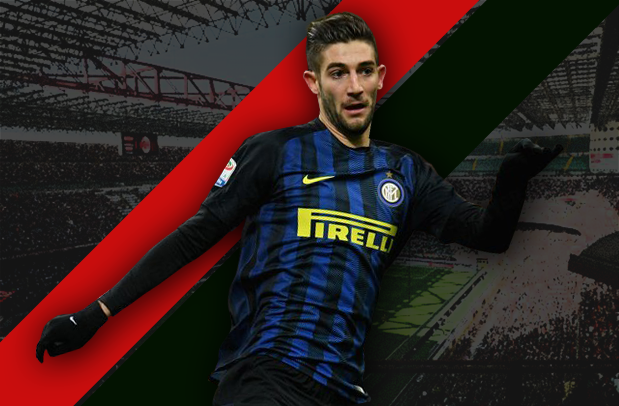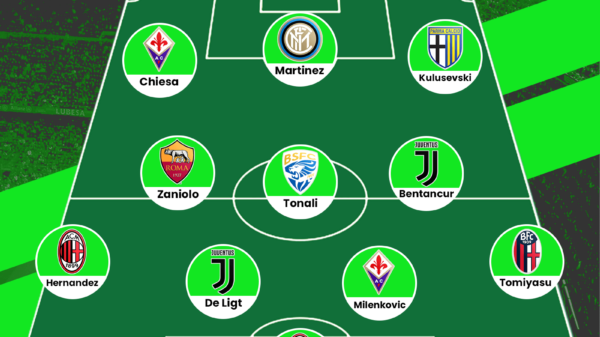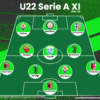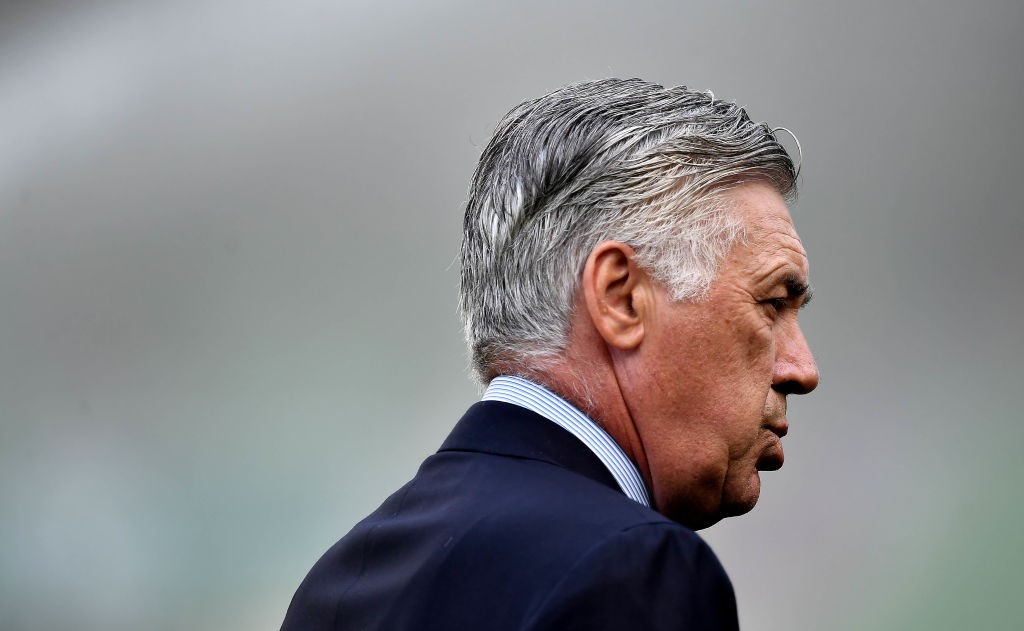Charles Onwuakpa writes a detailed scout report about Roberto Gagliardini, Inter’s dynamic midfielder.
Inter Milan have recovered from their poor start to the Serie A season, as former Lazio coach Stefano Pioli replaced Frank de Boer in the managerial role for the Nerazzurri in mid November 2016. The Italian has since impressed, winning 10 out of the 13 games he has been in charge of in all competitions at the time of writing: 9 of these have been consecutive victories (7 in a row in the league), as the Milan-based team have climbed up the table.
The Emilian coach has been able to bring out the best in Inter’s young squad, invigorating its talented midfield with the likes of Joao Mario, Brozovic and Kondogbia, as well as experienced Italian and foreign players such as Candreva, Miranda and Perisic. Their aggressive and attacking approach suit his vision of football, with effective overloads and direct football to help the team captain and deadly striker Mauro Icardi upfront. A player who has certainly caught the eye this season is their recent signing Roberto Gagliardini, one of the best youngsters in the league throughout the campaign so far, as he led Atalanta to an impressive 6th place alongside the likes of former teammates Franck Kessie and Mattia Caldara.
Who is Roberto Gagliardini?
Born in Bergamo, Italy on the 7th of April 1994, Gagliardini began his career at hometown club Atalanta in 2001, playing for its youth teams (one of the best in Italy) and later for the reserves. He was then promoted to the first-team squad for the 2013/14 season.
He made his professional debut on the 4th of December 2013, starting in a 2-0 win over Sassuolo in the Coppa Italia that season. During the winter transfer window that season, he was loaned to Serie B side Cesena to get some game time. He scored his first professional goal on the 25th of January 2014, just eight days after his arrival, in a 3-1 win at Varese. He picked up 19 appearances and helped the Emilian side to win promotion to Serie A. Throughout the following two seasons, he continued playing in Serie B and was sent on loan to Spezia and Vicenza managing a total of only 30 appearances.
On the 15th of May 2016, he made his Serie A debut in a 2-1 away victory over Genoa on the final match-day of last season. With the arrival of Gianpiero Gasperini to the Dea’s bench last summer, Gagliardini became a regular in the starting lineup, making 13 more Serie A appearances for the club.
On the 11th of January 2017, Inter Milan signed Gagliardini for a total of 25 million euros, bonuses included: 2 for the biennial loan till 2018 and an obligation to buy in that same year for around 20 million euros. He signed a 5 year contract and was assigned the squad number 5, as the number 4 had been withdrawn by the club following the retirement of legend Javier Zanetti. He made his club debut three days later, as he played the full-90 minutes to help Inter claim their fifth consecutive victory in the league in a 3-1 home win against Chievo.
He earned a handful of caps in Italy’s U-20 side and was a U-21 reserve. In November 2016 he was surprisingly called up for the first time to the Italian senior squad by coach Gianpiero Ventura, following injury to Claudio Marchisio for a World Cup qualification match against Liechtenstein and a friendly match versus Germany.
What is his Style of Play?
I must immediately state that Gagliardini is not a well renowned talent and his positive exploits surprised many pundits: what impresses the most is how he has really improved his game since last summer.
He is a natural “mezzala” in a three-man midfield or box-to-box midfielder in a double pivote role, although there are some aspects of his style of play that are slightly different from our usual knowledge of the #8 role as I will further mention. Back at Bergamo, he played as a central midfielder in Gasperini’s 3-4-3 alongside Franck Kessie; at Inter instead he currently plays in the #4 role in Pioli’s 4-2-3-1.
At the moment, he doesn’t have any major qualities that make him shine out as an individual, neither does he single-handedly shift the momentum in a game: he is more of a system player, who grew a lot of confidence thanks to a manager that trusts young players like Gasperini. He is incredibly on the verge of becoming a wonderful prospect in what promises to be an exciting Italian generation for the next decade, alongside the likes of Caldara, Rugani, Romagnoli, Donnarumma and Locatelli.
What are his Strengths?
If I had to describe Gagliardini with an adjective, it would definitely be dynamic. Gagliardini is 1.88 m (6 ft 2 in) tall and weighs 76 kg. He is energetic, hard-working, physically strong and has excellent stamina. He can cover lots of kilometres, either linking up with defence to distribute the ball and start attacking plays, drifting wide for wing overloads or to form passing chains or counterpressing the opponent to win the ball back. He is very good in aerial duels and intercepting the ball: with Gasperini he averaged 1.5 tackles and 1.5 interceptions per game; with Pioli he has noticeably improved his defensive actions, averaging a whopping 3.7 tackles and 2.7 interceptions per game.
The best part of his game at this stage of his career is his off-the-ball movement. Thanks to Gasperini and Pioli’s ideas of proactive football, Gagliardini has become an excellent player when defending from the front.
He has a strong personality to lead his teammates’ pressing high up the pitch and he’s very reactive in attacking second and third balls in high areas of the pitch, allowing his team to continue their attacking play and not lose momentum. Gagliardini’s presence outside the penalty box, when attacking or defending, is vital as he can use his height to win key aerial duels (1.7 per game at Atalanta, 2.9 per game with the Nerazzurri). In the first half of this season, he learnt how to use his body better when shielding the ball (he gets fouled 2.3 times per game and dispossessed only 0.3 times per game) and driving forward.
His aggressive style of play makes him a key figure for teams who play with high intensity such as Atalanta or Inter. The Dea’s second half display against Roma back in November was arguably the best team performance in the league so far in the Serie A. Gagliardini and Kessié were inspirational as the midfield duo bullied and outmuscled the likes of Manolas, De Rossi and Nainggolan: not something you see very often to be honest.
Gagliardini is not only a defensive-minded player; he has shown good qualities and well-timed runs when attacking the penalty box, as well as a forward-minded football brain. He can dribble the opponent (he attempted 0.5 take-ons per game at Bergamo and 1.7 take-ons per game at Inter), pick out a teammate with a vertical pass (his key passes per game have increased from 0.6 to 1.7) or pass to a nearby teammate and personally burst forward to provide extra passing solutions and/or create spaces to exploit. He hasn’t scored yet and doesn’t shoot much (1.3 shots per game), but his finishing will definitely improve in the future.
At the moment he is more of a ball winner than an assist provider.
What are his Weaknesses?
Gagliardini is a good passer (he averages 85.6% pass success percentage and 58 passes per game): he has good technique and uses both feet well, but he is not an excellent passer. His first touch isn’t always good (1.3 bad controls per game) and he doesn’t have a low centre of gravity, which makes it difficult for him to be in full control of the ball.
He has good passing abilities but is not very creative, rather more instinctive; he is not a regista and isn’t comfortable when he has to think a lot with the ball. His low creativity makes him pick out the worst solutions in some cases, such as in the following gif against Udinese where he is dispossessed and gifts the visitors an attacking transition.
He is quick, but not extremely pacey or agile: for this reason, if he mistimes a challenge he can be easily outpaced and is not reactive enough to track back and recover his position, leading him to commit fouls often. The gif below is a perfect example in Atalanta’s 2-1 win against Empoli.
At 22 years of age, he certainly has big margins of improvement especially in the attacking aspect of the game, but he has shown that he has the power and tactical intelligence to strive for greatness. His performances improve every time the match tempo and intensity rise, allowing him to be a dominant figure for his team. If he is able to continue his outstanding development, he will surely become one of the best midfielders in modern football.
Read all our other scout reports here





























































